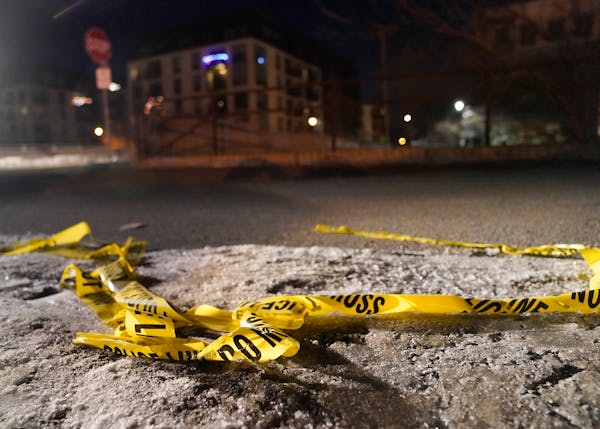As well-wishers flocked officer Ikran Mohamed, 4-year-old Amira Shafii raised her little arm in a proud salute — her auntie's new police cap perched lopsided on her head. The "junior officer" cracked a smile.
Mohamed, dressed in a black hijab, adjusted her newly pinned badge with henna-laced hands. She'd just become the first Somali woman to ever join the Minneapolis Police Department.
"I want to be a role model for girls who look like me, so they can say 'I can do it, too,'" Mohamed, 23, told reporters Thursday night following a graduation ceremony honoring 11 new recruits and 12 lateral hires from other Minnesota law enforcement agencies. "I'm just very excited to be here and represent my people and my community."
Mohamed immigrated to the United States from Kenya when she was 10 years old. She previously worked as a corrections officer in Steele County.
Beside her, 27-year-old officer Lesly Vera also had the power of representation on her mind. Vera became the first noncitizen to serve on the police force Thursday, marking a significant victory for immigration advocates.
Although thousands of lawful permanent residents and Deferred Action for Childhood Arrivals (DACA) recipients already serve in the U.S. military, many states maintain citizenship requirements for those seeking to become a licensed police officer. But in recent years, as law enforcement agencies across the nation have struggled to replenish their ranks with qualified candidates, a growing number have eliminated that requirement.
In late 2022, the Minnesota Legislature changed state law allowing for applicants who are either citizens or "eligible to work in the United States under federal requirements."
"I was basically the guinea pig," said Vera, who was born in Mexico but has lived in the U.S. since she was 4 years old.
Since childhood, she's dreamt of becoming a cop. Legal hurdles never tamped down the desire. Vera became a Community Service Officer with MPD and finished her required schooling, but was unable to advance due because of her residency status.
"That didn't stop me," she said. "I did it all over again."
Chief Brian O'Hara acknowledged that there may be some who question the law change, but he vigorously defended it — referencing a long American tradition of allowing immigrants to enlist, fight and die for the country.
"Somebody like [Vera], who has been here essentially her entire life, absolutely is entitled to protect her community in the same way that anyone else here has, and we're honored to have her," he said. "My opinion: She should now be at the top of the list when it comes to citizenship."
There are only six other Hispanic women and 10 Black women on a force of about 573 rank-and-file officers, according to demographic data provided by MPD.
The Police Department adopted a new policy on hijabs and headscarves last year, hoping to accommodate a diversifying group of applicants. It requires that any head covering worn as part of their uniform must not interfere with the use of police equipment, like helmets or gas masks.
After completing a rigorous 16-week academy, all 11 new officers will be spread evenly throughout the city's five police precincts for field training. Four others will join the Minneapolis park police.
MPD ranks hit an all-time low of 560 in March, down from over 900 in early 2020, according to payroll data. But city officials see glimmers of hope: Applications jumped 45% this year, partly driven by an influx of lateral hires amid a citywide effort to rebuild the department's depleted ranks.
"They chose Minneapolis," O'Hara said at a community event last week while introducing several new recruits. "They chose this profession when everyone else was leaving."

Minneapolis City Council lowers street food cart license fee, hoping fruit sellers will hawk legally

How the federal raid unified the fractious Minneapolis City Council against Trump, sort of
Trump travel ban 'cruel,' Minnesota advocacy group says

No verdict after first day of jury deliberation in Derrick Thompson murder trial for crash that killed 5

